BeesBees Anatomy Bee Behaviour Blogging Bees… Bees – image index Amegilla Bee Apis mellifera Austroplebeia australis Austrothurgus Braunsapis sp Ceylalictus perditellus Colletidae Euryglossinae Exoneura Homalictus Hyleoides bivulnerata Lasioglossum Lasioglossum (Chilalictus) Lipotriches Megachile Meroglossa Stenotritidae Tetragonula Thyreus Xylocopa
Images and Contributor Author Gary Taylor ◦
I was taking pics of bees on a Eucalyptus at a mates place a bit out of town when I’d noticed some ants a couple of metres away dragging something along. My eyes aren’t great these days but the mind processed the black and red colour in this configuration as ‘potter wasp’, go back to your bees… But as I did, the ants turned it around and the eyes as bad as they are caught a tiny flash of white in the peripheral vision… Hmmmm, that’s not right for a potter wasp… So I took it off the ants for a better look… That face looks male
Hyleoides bivulnerata by Gary Taylor
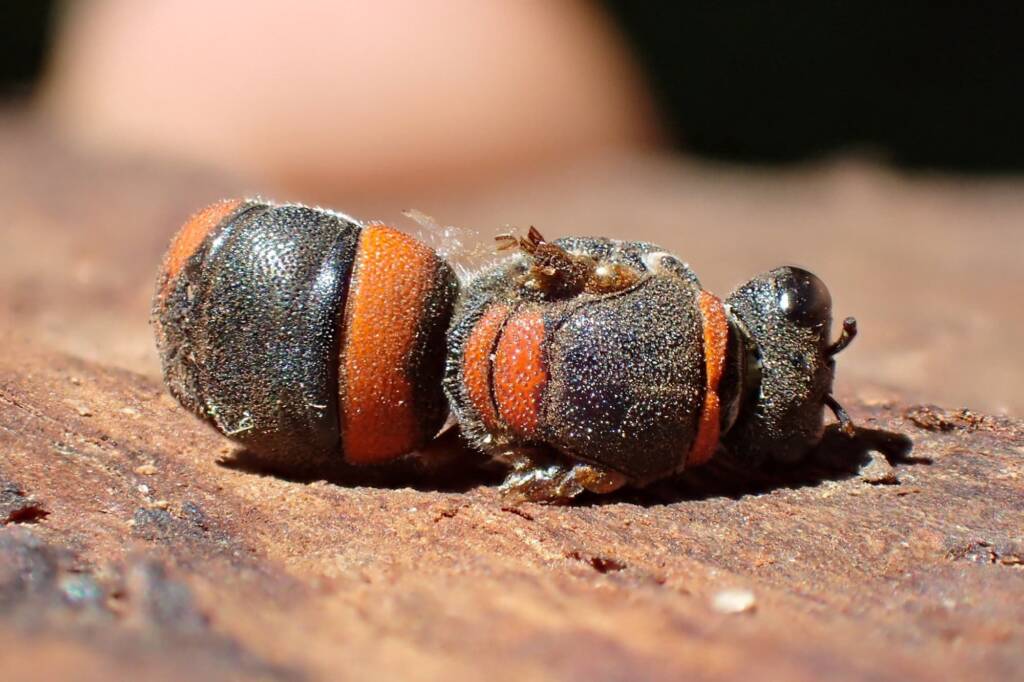
Hyleoides bivulnerata belong to the family Colletidae, sometimes referred to collectively as the plasterer bees. They are also one of several bee species, that include the entire genus Hyleoides, who are known as mimics of the vespid wasps, having the same bold black-and-orange or black-and-yellow patterning and wings that are darkened anteriorly. Also like these wasps, many hold their wings in a V-shape when alighted, instead of folding them back over their abdomen, as is with most native bees.
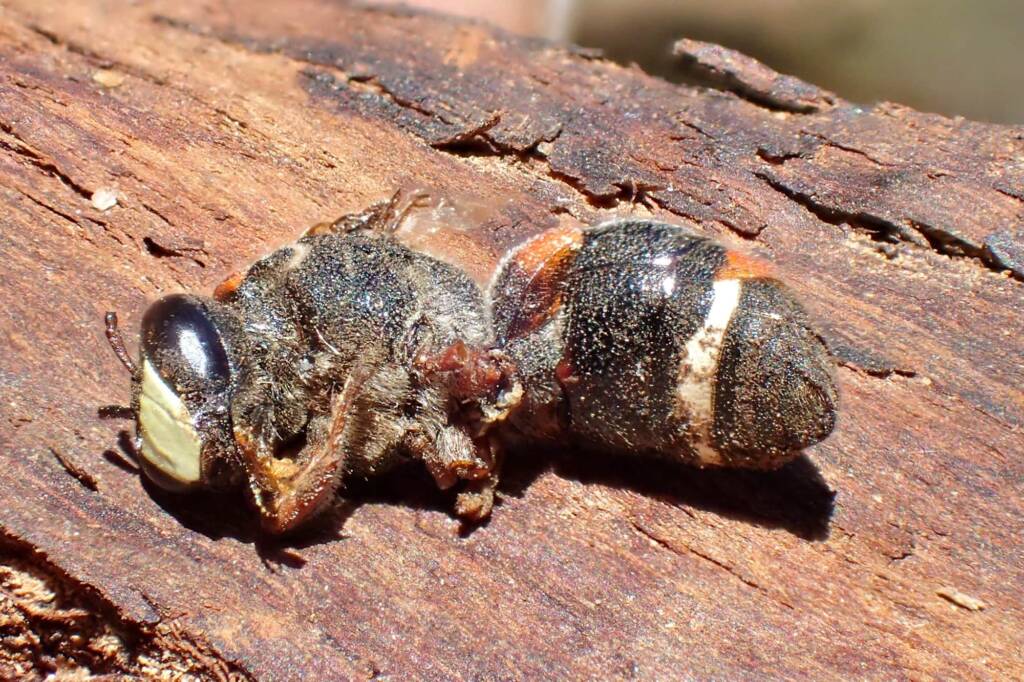
Another identification feature for the Hyleoides is to check for a projection on the second sternite (second segment under the abdomen).
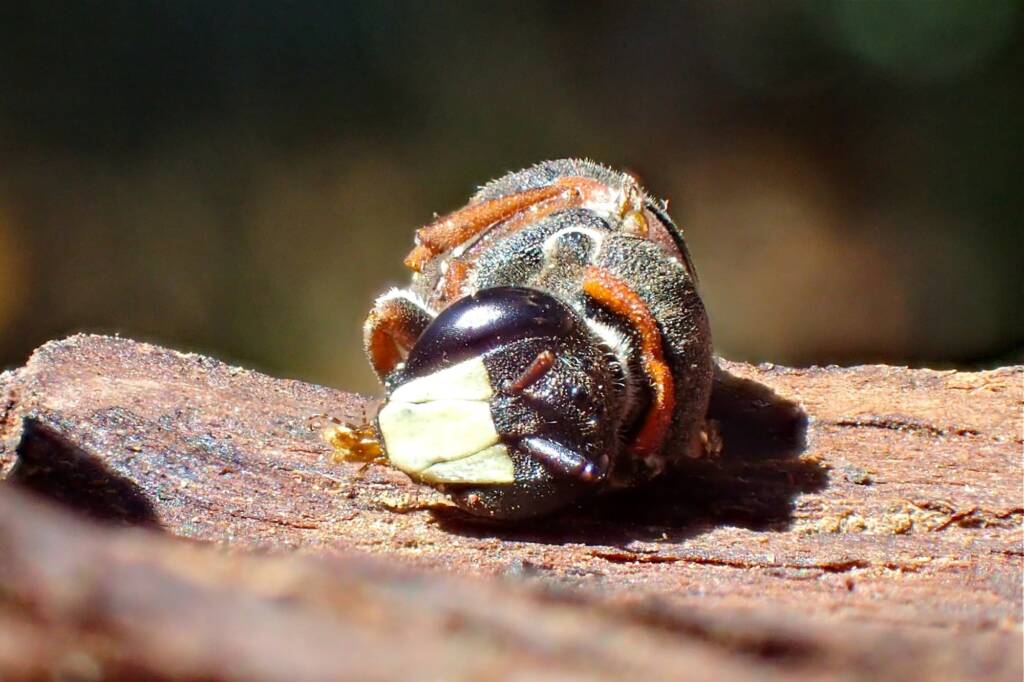
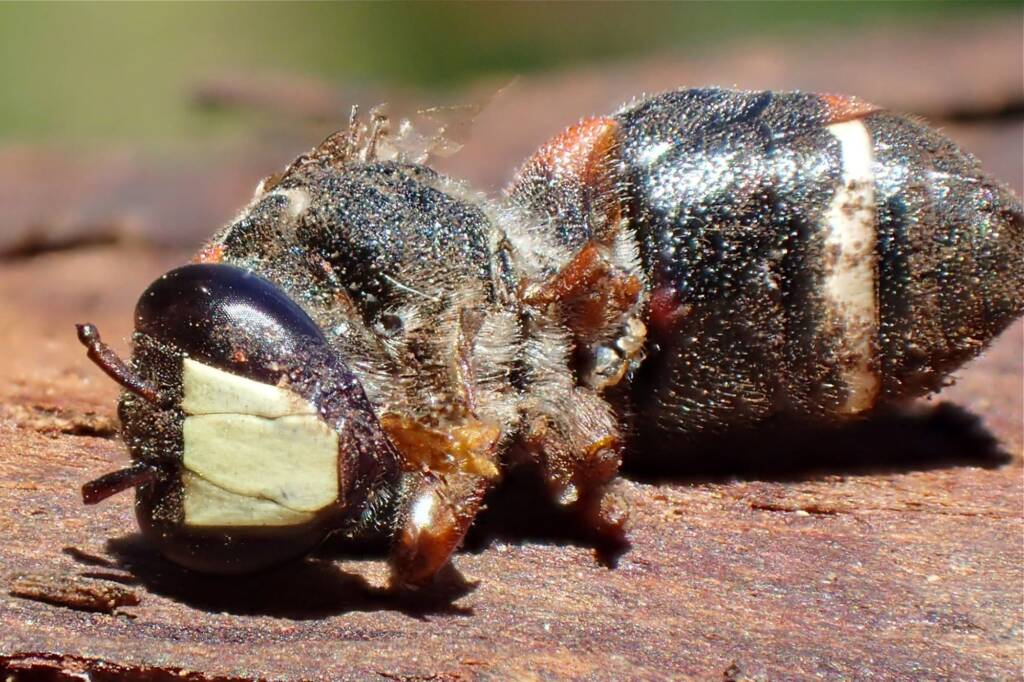
A distinctive native bee, approximately 13 mm long, the Hyleoides bivulnerata has bold orange stripes making it look like a wasp, similar to the colouring and shape of an mud-dauber wasp.
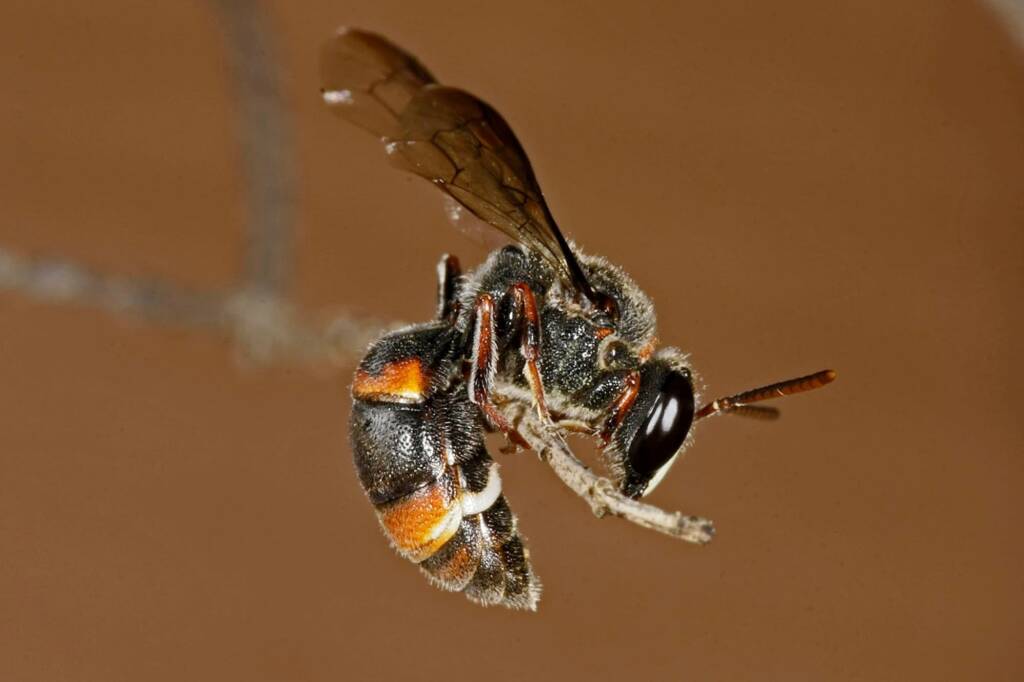
The Hyleoides bivulnerata, have fine feathery hairs on their bodies, including the back of the thorax. Like other species in the subfamily Hylaeinae they are known to collect pollen by ingesting and regurgitating it mixed with nectar.
Many species of the subfamily Hylaeinae are known to nest in hollow sticks or pre made holes such as old borer holes, some will use old wasps nests, usually using the vacated mud nest that have been built above ground by wasps.
Many thanks to Marc Newman for his photograph of the Hyleoides bivulnerata, Ballandean, QLD
- Scientific classification
- Kingdom: Animalia
- Phylum: Arthropoda
- Subphylum: Hexapoda
- Class: Insecta
- Informal: Pterygotes
- Order: Hymenoptera
- Superfamily: Apoidea
- Informal: Apiformes
- Family: Colletidae
- Subfamily: Hylaeinae
- Genus: Hyleoides
- Species: Hyleoides bivulnerata
Footnote & References
- A Guide to Native Bees of Australia, by Terry Houston, ISBN: 9781486304066, p40
- Photographs and content contribution © Gary Taylor, Western Australia
- Photograph Hyleoides bivulnerata, Ballandean, QLD © Marc Newman, Flickr, https://flickr.com/photos/koolbee/albums
- Native bivulnerata hylaeine, PaDIL, https://www.padil.gov.au/pollinators/pest/main/138900
BeesBees Anatomy Bee Behaviour Blogging Bees… Bees – image index Amegilla Bee Apis mellifera Austroplebeia australis Austrothurgus Braunsapis sp Ceylalictus perditellus Colletidae Euryglossinae Exoneura Homalictus Hyleoides bivulnerata Lasioglossum Lasioglossum (Chilalictus) Lipotriches Megachile Meroglossa Stenotritidae Tetragonula Thyreus Xylocopa
